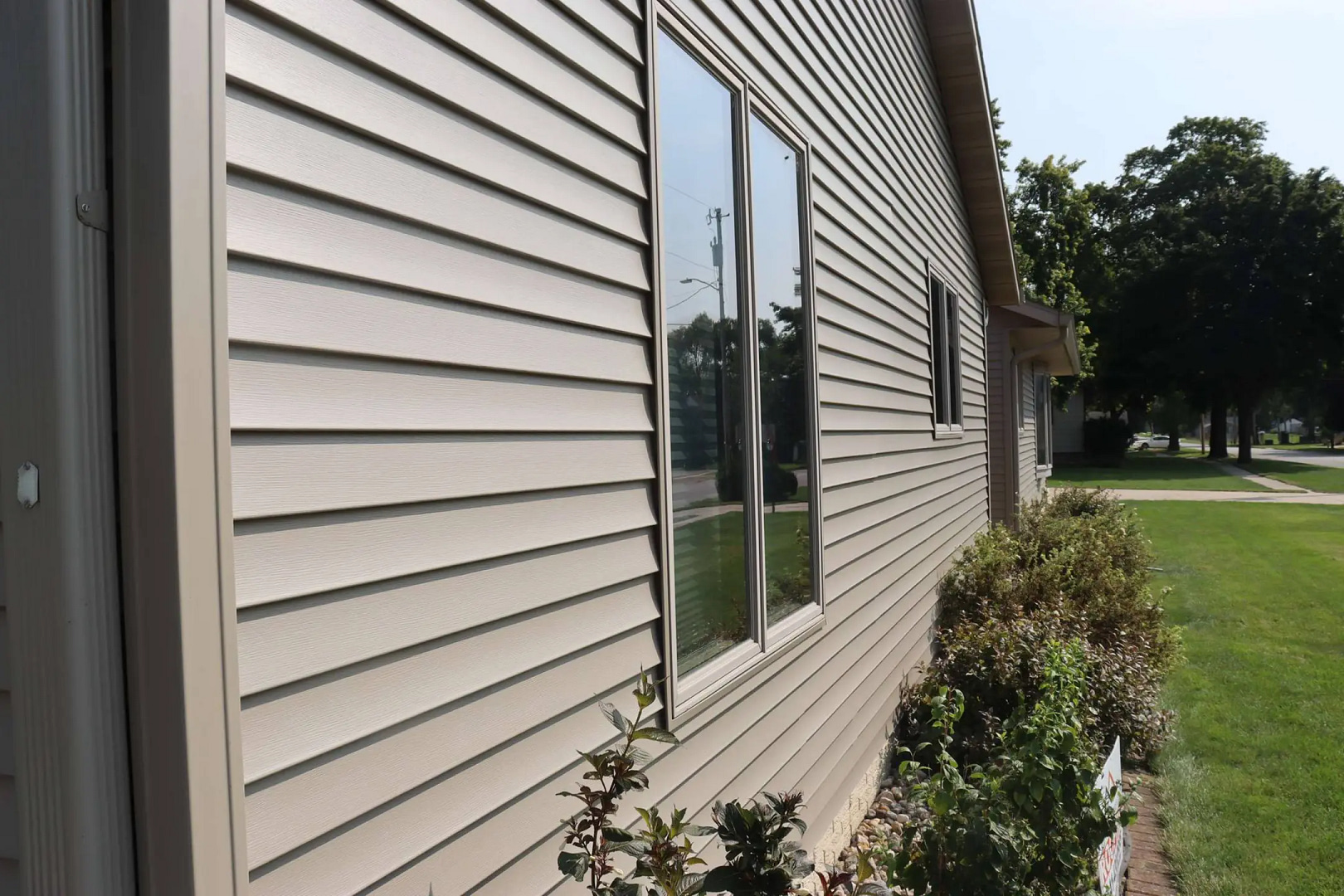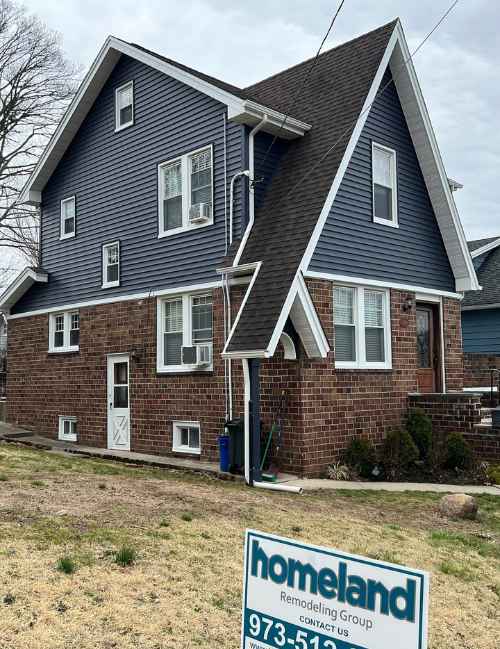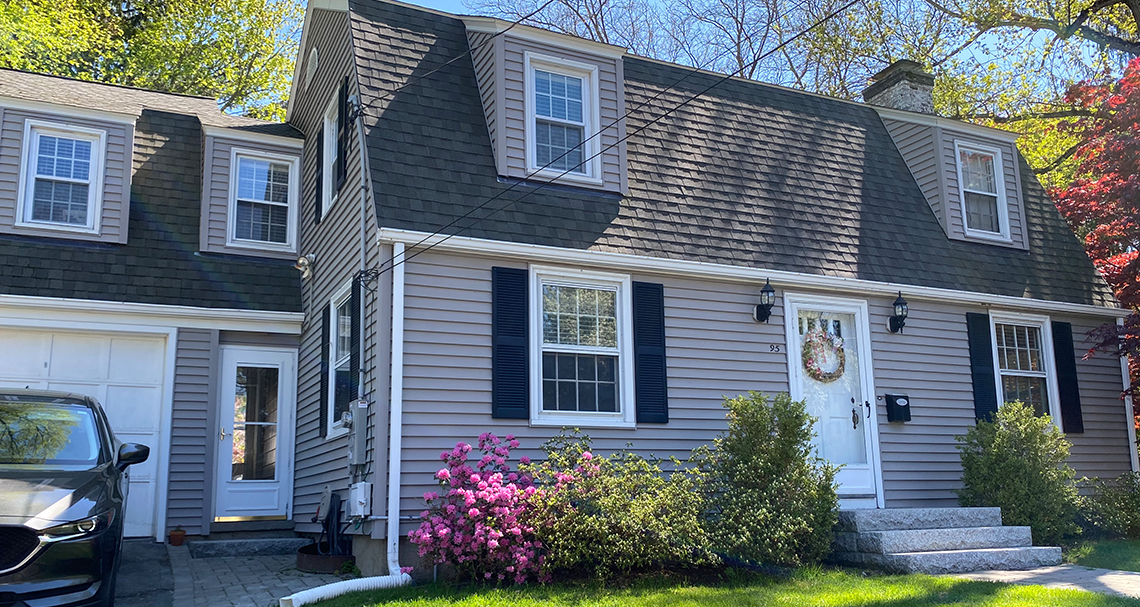Morris Siding Contractor Known for High-End Installations and Customer Care
Morris Siding Contractor Known for High-End Installations and Customer Care
Blog Article
The Crucial Guide to the Different Sorts Of Siding and Their Distinct Benefits
In the world of home renovation, picking the right exterior siding is a crucial choice that influences both visual charm and useful performance. With so many options to consider, which siding product absolutely stands out for your particular job?
Wood Siding
Wood house siding, a preferred option for domestic exteriors, supplies a classic aesthetic that combines all-natural elegance with architectural honesty. This home siding material is available in numerous styles, consisting of clapboard, tiles, and board-and-batten, enabling property owners to customize their appearance to match their style preferences. Wood exterior siding is generally crafted from durable varieties such as cedar, redwood, or yearn, which are known for their strength and ability to withstand ecological stressors.
Among the main advantages of wood house siding is its exceptional insulation properties, which can add to energy performance and lower heating costs. In addition, wood home siding is biodegradable, making it an eco-friendly alternative when sourced sustainably. Routine maintenance, including paint or staining, can extend its life-span and boost its appearance, permitting property owners to maintain the natural appeal of the timber.
Nonetheless, potential disadvantages consist of susceptibility to bugs, rot, and climate damage, demanding appropriate therapy and maintenance - morris siding contractor. In spite of these worries, when properly taken care of, timber siding can offer a beautiful and resilient option that enhances the character of a home while providing a cozy, welcoming ambience

Plastic Exterior Siding
Plastic home siding has arised as a leading choice for homeowners seeking a low-maintenance exterior choice that combines durability and price. This flexible material is crafted from polyvinyl chloride (PVC), making it immune to various climate conditions, consisting of moisture and UV rays. As an outcome, vinyl house siding does not warp, rot, or discolor, guaranteeing long-lasting visual allure.
One of the key benefits of vinyl siding is its substantial variety of designs and colors, enabling homeowners to accomplish the wanted look for their property without the requirement for constant repainting. Additionally, vinyl house siding is easy to set up, which can dramatically reduce labor expenses throughout construction or remodelling jobs.
Vinyl home siding likewise adds to energy efficiency. Lots of alternatives attribute insulation support, which improves thermal efficiency, aiding to keep comfy interior temperatures and potentially lowering energy expenses. Its smooth surface facilitates easy cleaning, needing only periodic washing with a garden hose to remove dirt and debris.
Fiber Cement Exterior Siding
Fiber cement exterior siding has gained traction among home builders and house owners alike because of its exceptional combination of durability and visual convenience. Made up of a blend of cement, cellulose, and sand fibers, this home siding choice is engineered to hold up against severe weather, including high winds, hefty rainfall, and temperature fluctuations, making it a durable option for residential exteriors.

Among the primary advantages of fiber cement home siding is its resistance to pests, such as termites, and its non-combustible nature, offering enhanced fire security. morris siding contractor. Additionally, it is offered in a wide variety of structures, styles, and colors, enabling home owners to attain their preferred visual without sacrificing performance
An additional benefit is its low maintenance requirements; fiber concrete siding normally requires painting or staining every 5-10 years, which is less constant than various other materials. Additionally, its long life adds to a lower general cost of ownership, as it decreases the demand for constant repairs or replacements.
Inevitably, fiber concrete exterior siding represents an outstanding financial investment for those looking for a resilient, appealing, and flexible outside choice, integrating both type and feature to pop over to these guys enhance the home's aesthetic allure.
Steel House Siding
The attraction of steel house siding hinges on its robust longevity and modern-day visual allure, making it a preferred option for contemporary architecture. Available in materials such as aluminum and steel, steel siding provides a range of surfaces and shades, allowing property owners to achieve a customized appearance that complements their design vision.

Power efficiency is another significant advantage, as numerous metal home siding items are made with insulation options that help regulate interior temperature levels. This can bring about reduced power expenses gradually. In addition, steel home siding is usually recyclable, making it an environmentally friendly option for sustainability-minded home owners.
The installment procedure for metal exterior siding can be fairly straightforward, resulting in a quicker turn-around time for building projects. Overall, steel house siding incorporates performance and style, making it a practical alternative for those seeking a visually enticing and long-lasting outside surface.
Brick and Rock Home Siding
Brick and rock home siding stands apart as a timeless selection that improves the visual appeal of any home. Recognized for their longevity and reduced maintenance, these products offer an outstanding roi while boosting the building's visual allure. Offered in various shades, textures, and patterns, block and rock can be tailored to match diverse building styles, from typical to contemporary.
Among the primary benefits of block and stone home siding is their power efficiency. Both materials have natural shielding residential properties that help control interior temperature levels, my blog possibly decreasing cooling and heating prices. Additionally, they provide remarkable fire resistance contrasted to other exterior siding choices, adding to improved safety and security.
An additional benefit is their longevity. Brick and stone can last for decades, commonly calling for marginal upkeep beyond occasional cleaning. Unlike timber house siding, they are invulnerable to pests and rot, ensuring a long-lasting outside that withstands the elements.
Conclusion
In recap, the selection of siding dramatically affects a home's aesthetic allure, energy performance, and upkeep needs. Each type of house siding-- whether timber, vinyl, fiber metal, block, or cement and stone-- supplies distinct advantages tailored to numerous property owner choices and environmental problems.
One of the primary advantages of timber home siding is its excellent insulation buildings, which can contribute to power performance and lower home heating costs. Furthermore, timber exterior siding is eco-friendly, making it an environmentally pleasant alternative when sourced sustainably.One of the main advantages of metal exterior siding is its resistance to various environmental factors.Energy performance is another substantial advantage, as several metal siding products are designed with insulation alternatives that aid manage indoor temperature levels. Each kind of siding-- whether wood, vinyl, fiber brick, concrete, or steel and rock-- offers unique benefits customized to different homeowner preferences and environmental conditions.
Report this page